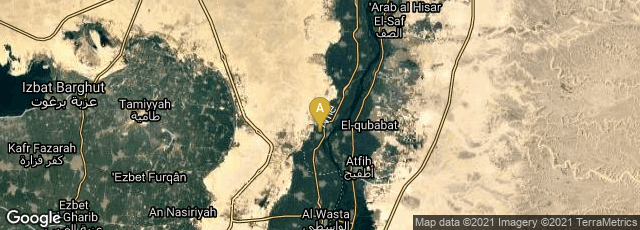

This "panel of signs features images of a bull’s head on a short pole followed by two back-to-back saddlebill storks with a bald ibis bird above and between them. This arrangement of symbols is common in later Egyptian representations of the solar cycle and with the concept of luminosity" (https://news.yale.edu/2017/06/20/yale-archaeologists-discover-earliest-monumental-egyptian-hieroglyphs).
One theory of the origin of writing in Egypt proposes that Egyptian hieroglyphs evolved from symbols drawn on pottery produced by the Gerzeh culture (Gerzean, Girza, Jirzah), which was excavated from a predynastic Egyptian cemetery located along the west bank of the Nile and today named after al-Girza, the nearby present day town in Egypt.
In 2017 John Coleman Darnell of Yale University discovered different evidence of early rock carvings at El-Khawy, providing other evidence, and much larger evidence of formative stages of hieroglyphic script, in rock art depicting a herd of elephants.
"The archaeologists also identified a panel of four signs, created circa 3,250 B.C.E. and written right to left — the dominant writing direction in later Egyptian texts — portraying animal images of a bull’s head on a short pole followed by two back-to-back saddlebill storks with a bald ibis bird above and between them. The arrangement of symbols is common in later Egyptian representations of the solar cycle and with the concept of luminosity.
“These images may express the concept of royal authority over the ordered cosmos,” says Darnell.Darnell says that the team was “absolutely flabbergasted” by the find because of the immense size of not just the individual tableaus, but the individual elements as well." (https://news.yale.edu/2017/06/20/yale-archaeologists-discover-earliest-monumental-egyptian-hieroglyphs, accessed 8-2020).